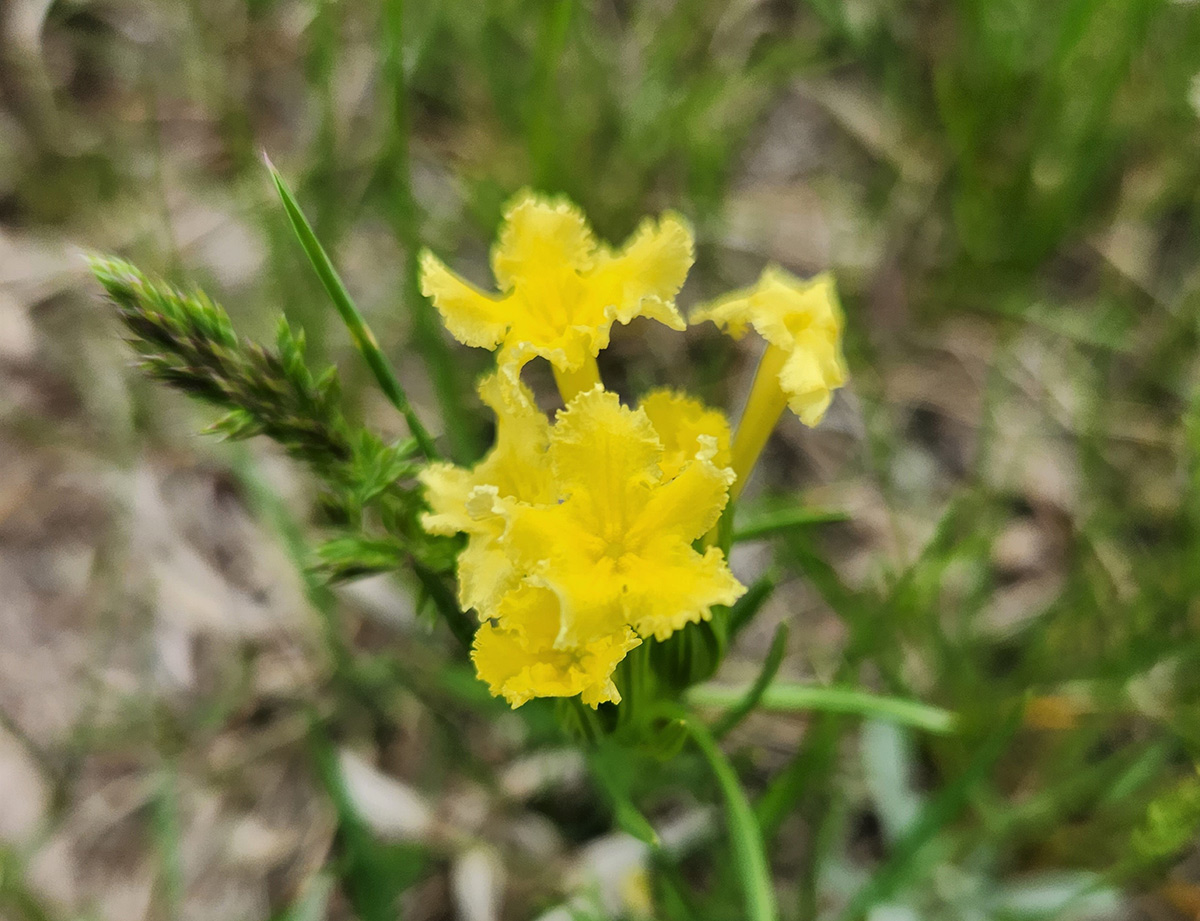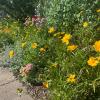On a warm, dreary day in early May, the sky was transitioning from clear blue and sunny to dark gray with a threat of rain. Dr. Tom Rosburg, a “burn boss”, hurried to unload fire equipment from his half-ton pickup as I parked my car. It had been a struggle to get restorative prairie fire on the ground this spring at Polk City Cemetery and the looming clouds were not making matters easier. We managed to get fire started in the dead grasses just in time.
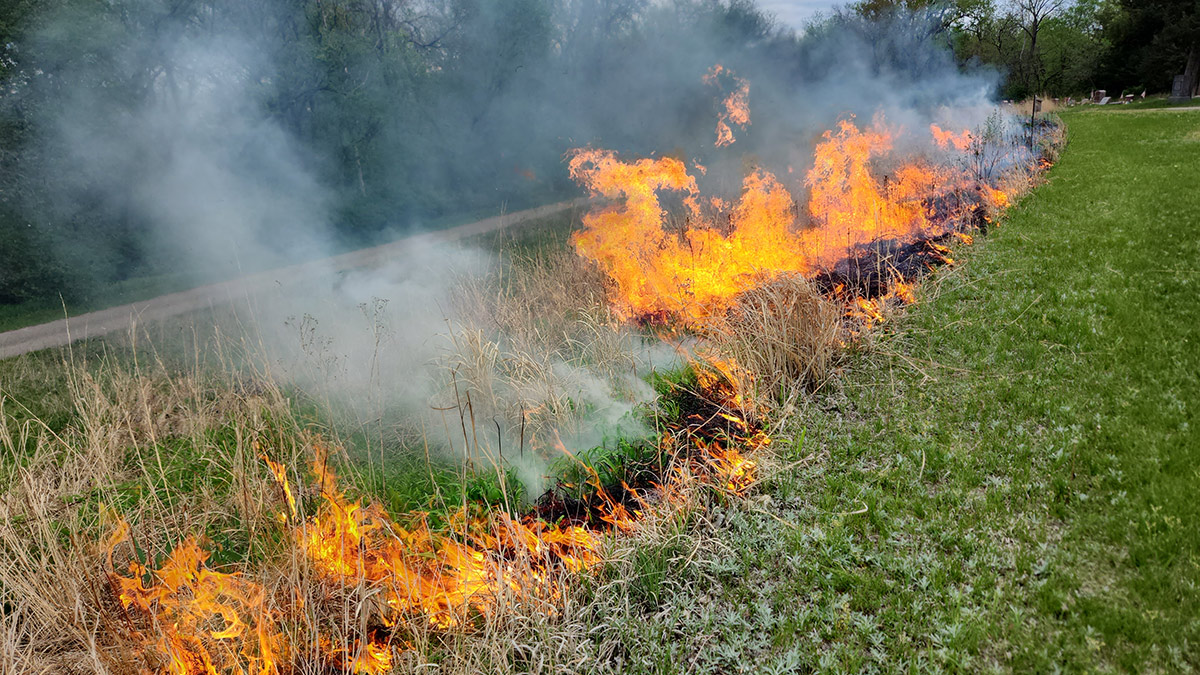
Over the last few years I have assisted with and documented the efforts of saving small, fragile prairie remnants within Polk City Cemetery in Polk City, Iowa. That work is chronicled in previous blogs, Discovery of a Rare Plant Through Remnant Prairie Restoration and The Return of Wild Pansy at Polk City Cemetery. We have conducted four prescribed burns and multiple days of brush removal.
It is with a great sense of pride I am happy to report we are continuing to see remarkable results of our dedicated land management. Remnant prairie indicator species that have not been seen in several years, if not decades, are reappearing. New populations of existing plants we were unaware of are now visible. We once thought prickly pear (Opuntia humifusa) existed only within a few square feet of one isolated area. Now, another population has been uncovered (literally) in a larger remnant parcel of the property. Species like fringed puccoon (Lithospermum incisum) and blue-eyed grass (Sisyrinchium campestre) were scattered throughout the entire cemetery remnants. Most notable was the prairie violet (Viola pedatifida). Somehow, some way, prairie violets emerged in small numbers. The prairie violets were even discovered in a very degraded remnant pocket. It was hard to focus on the prescribed burn at hand as I desperately ran around taking photos to document flowers, when not laying down fire with the drip torch.
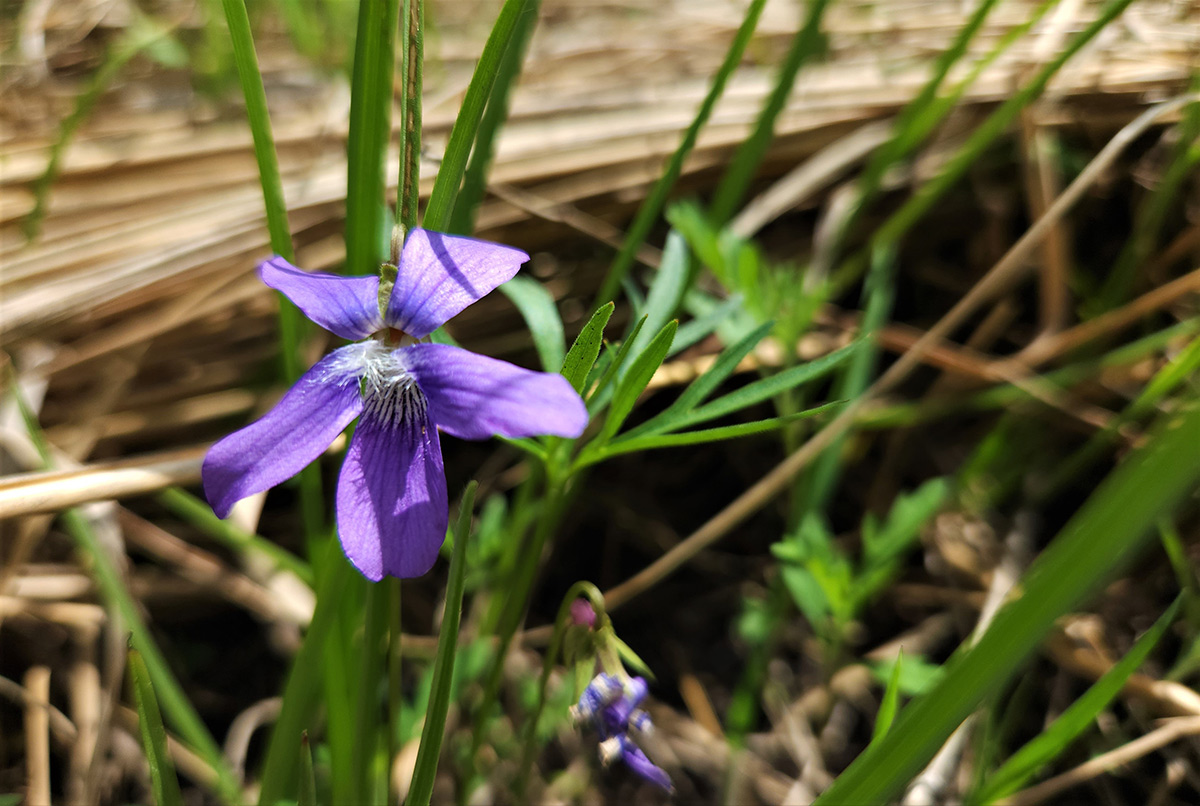
Inevitably, rain began to fall just as we finished a section of one parcel and moved to another. (We do not burn all the fragments each year.) The majority of the other parcel had not been burned in a very long time. It was here we spotted the prickly pear and the prairie violets. We continued burning as sprinkles dropped harder and harder, attempting to burn as much as we could until finally a downpour completely shut us down.
While the goal of area and space burned would not be met, the welcome surprise of long lost wildflower friends eased our frustration. We are just volunteers after all. Sometimes we can only do so much. We didn’t hurry to take shelter, and instead of fretting over wet clothing, we relished in our discoveries. We wiped rain from our cell phone lenses to take pictures, we talked and laughed, and reminisced about what was generations ago at Polk City Cemetery.
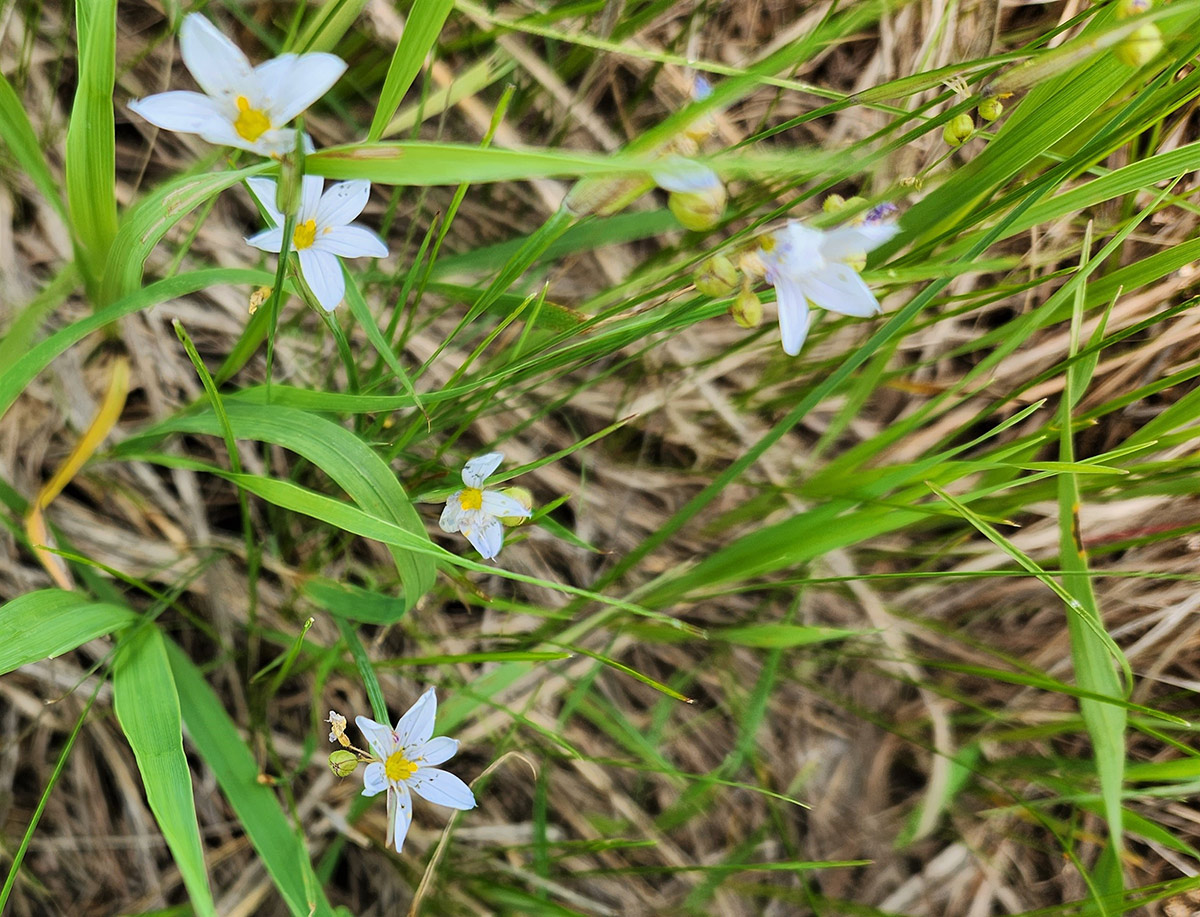
My experience with Polk City Cemetery the last four years has been magical to say the least. I don’t think there has ever been a time in which I have been reminded (more than once) that the fruit of my labor, time, and travel has meant so much. The reward of seeing nature in real time recover from our neglect and abuse is indescribable. There really are no words for the flutter in your heart when new species surface or previous ones return. My work at this remnant is one the top highlights of my conservation journey. The remnants may not be large in size (so few are in Iowa) or in pristine condition, but they have given me joy. They have given me hope. They have proven time and again that restoration is critical to our native landscapes. These ecosystems can be quite resilient if taken care of. I plan to spend many more years doing just that.
